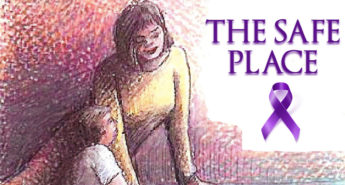 Child safety is a primary concern for every parent, guardian, and caregiver. With the ever-growing dangers and threats in today’s world, it’s crucial to take all necessary steps to ensure that children are protected and safe. From accidents and injuries to online dangers and bullying, children face a wide range of risks. To help safeguard our little ones, here are some simple tips to ensure children’s safety.
Child safety is a primary concern for every parent, guardian, and caregiver. With the ever-growing dangers and threats in today’s world, it’s crucial to take all necessary steps to ensure that children are protected and safe. From accidents and injuries to online dangers and bullying, children face a wide range of risks. To help safeguard our little ones, here are some simple tips to ensure children’s safety.
It is critical to educate children about personal safety, such as teaching them to never talk to strangers, who and how to call for help, and what to do if they ever feel threatened or in danger. Additionally, it’s vital to establish clear and open lines of communication with your child, so they feel comfortable talking to you about any concerns they may have. Take their concerns seriously. Another aspect of personal safety involves protecting them from accidents and injuries. For young children, this means ensuring their environment is safe, such as using safety gates, covering electrical outlets, and keeping potentially harmful chemicals out of reach. Children should also be taught to wear helmets while riding bikes, skateboards, or scooters, and Basic street etiquette such as looking both ways and crossing the street at crosswalks if available.
In today’s digital age, online safety is just as important as physical safety. Children are increasingly using technology and the internet, and it’s key to educate them on how to use it safely. This means setting boundaries and guidelines for online activity, such as not sharing personal information, avoiding cyberbullying, and not engaging with people they don’t know. Certain social media can be a hotbed for cyberbullying activity, monitor its use among younger teens.
Bullying is another major concern for children’s safety. It’s essential for parents, guardians, and caregivers to teach children how to handle bullying and to provide a supportive environment where they feel comfortable discussing any experiences they may have had. Additionally, it’s beneficial to educate children about the impact of bullying on others and to encourage them to speak up and take action if they see someone being bullied.
Finally, it’s important to have a plan in place in case of an emergency. This means having a designated meeting place, knowing emergency phone numbers, and discussing evacuation plans in case of a fire or other natural disaster such as a tornado or flood.
Children’s safety is a complex and multifaceted issue, but by taking the steps outlined above, you can help ensure that your little ones are protected and secure. From education and communication to preparation and action, there is much that can be done to safeguard our children and ensure they grow up in a safe and secure environment.
References
Assistant Secretary for Public Affairs (ASPA). (2021, November 5). What is cyberbullying. StopBullying.gov. Retrieved April 19, 2023, from https://www.stopbullying.gov/cyberbullying/what-is-it
Assistant Secretary for Public Affairs (ASPA). (2022, June 30). What is bullying. StopBullying.gov. Retrieved April 19, 2023, from https://www.stopbullying.gov/bullying/what-is-bullying




Leave a Reply